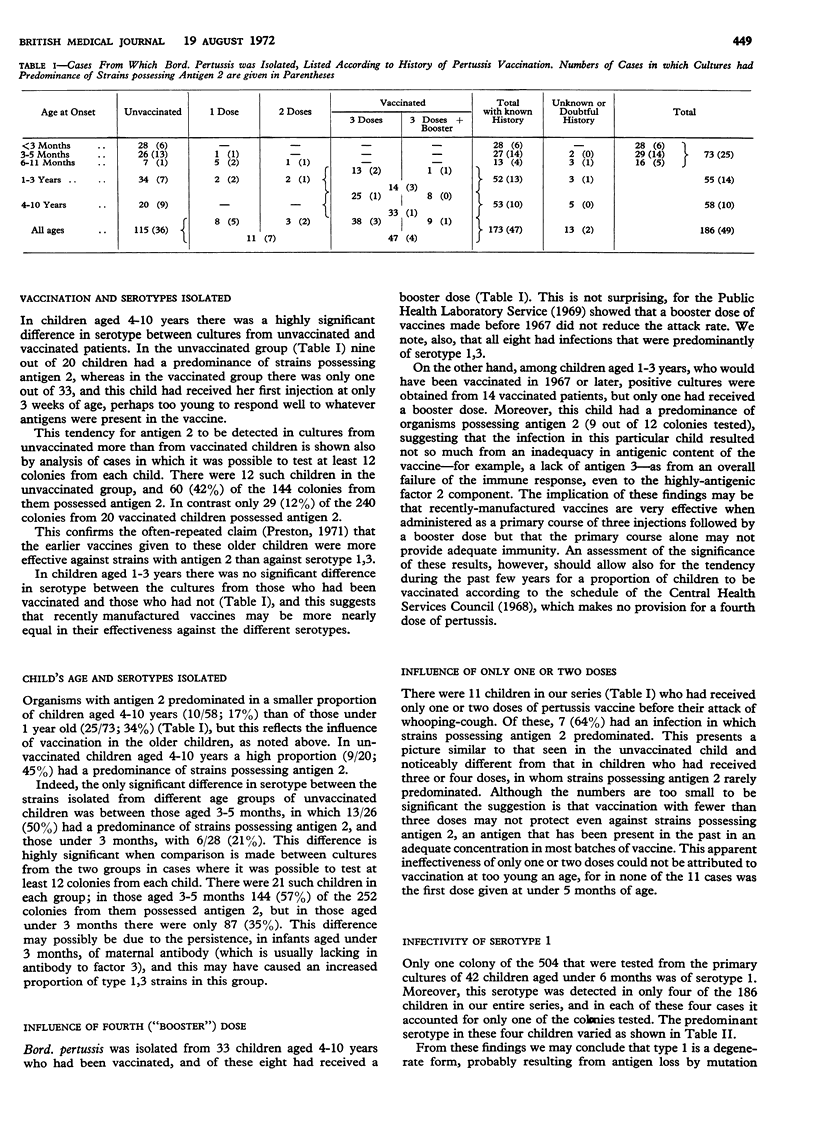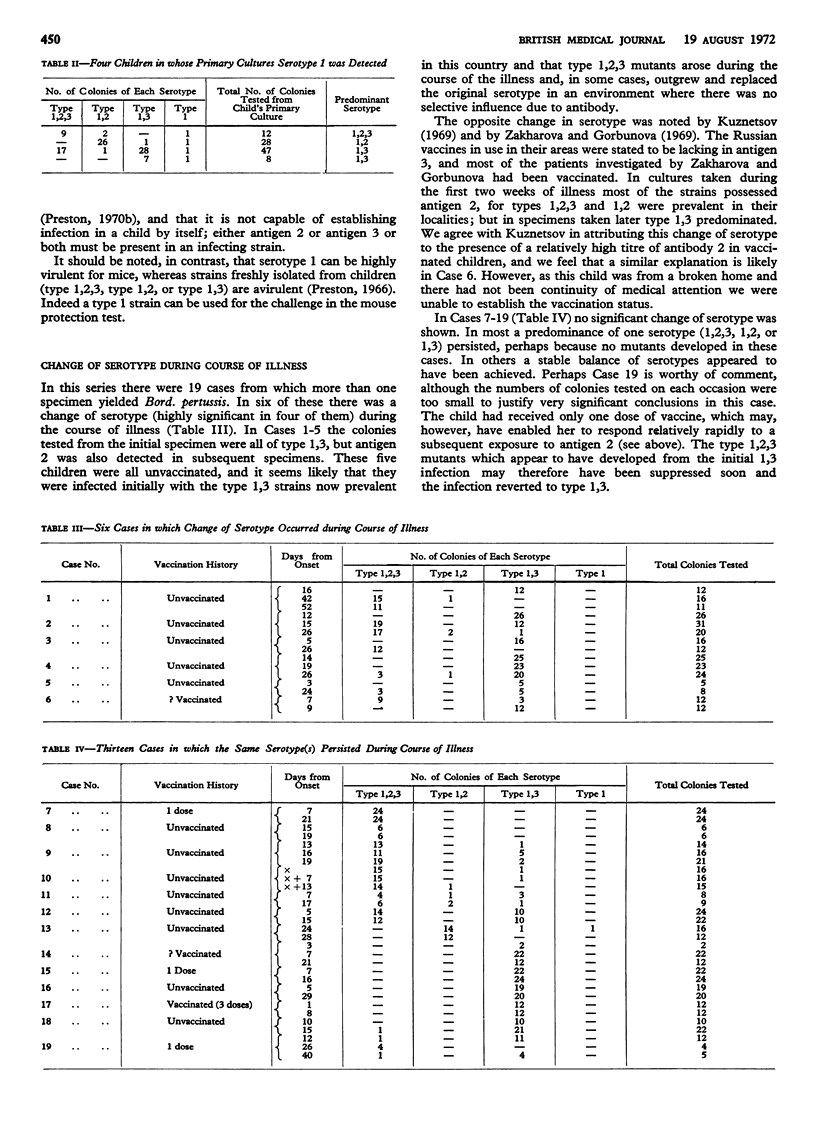Abstract
A study of pertussis infections in 186 children under 11 years of age in the Manchester region during 1969-71 suggests that recently-manufactured vaccines have been more effective than those made before 1967. The earlier vaccines were effective mainly against the serotypes of Bordetella pertussis possessing antigen 2, while those made from 1967 are more nearly equal in their effectiveness against thedi fferent serotypes. A booster dose of the earlier vaccines did not prevent infection with type 1,3 organisms, but we obtained a positive culture from only one child who had received four doses of recent vaccine.
Simultaneous infection of a child with two or more serotypes was frequently seen. The predominant serotype in a patient was usually type 1,3; less often it was type 1,2,3 or type 1,2; it was never type 1. A change of serotype sometimes occurs during the course of the illness and is probably directed by the vaccination status of the patient in relation to the serotype of the initial infection.
Our findings emphasize the need for vaccines to contain adequate amounts of all three pertussis agglutinogens, and for satisfactory immunization schedules to be used in their administration.
Full text
PDF



Selected References
These references are in PubMed. This may not be the complete list of references from this article.
- Blaskett A. C., Gulasekharam J., Fulton L. C. The occurrence of Bordetella pertussis serotypes in Australia, 1950-1970. Med J Aust. 1971 Apr 10;1(15):781–784. doi: 10.5694/j.1326-5377.1971.tb87864.x. [DOI] [PubMed] [Google Scholar]
- Muggleton P. W. Vaccines against pertussis. Public Health. 1967 Jul;81(5):252–264. doi: 10.1016/s0033-3506(67)80033-7. [DOI] [PubMed] [Google Scholar]
- PRESTON N. W. EFFECTIVENESS OF PERTUSSIS VACCINES. Br Med J. 1965 Jul 3;2(5452):11–13. doi: 10.1136/bmj.2.5452.11. [DOI] [PMC free article] [PubMed] [Google Scholar]
- PRESTON N. W. TYPE-SPECIFIC IMMUNITY AGAINST WHOOPING-COUGH. Br Med J. 1963 Sep 21;2(5359):724–726. doi: 10.1136/bmj.2.5359.724. [DOI] [PMC free article] [PubMed] [Google Scholar]
- Preston N. W. Potency tests for pertussis vaccines: doubtful value of intracerebral challenge test in mice. J Pathol Bacteriol. 1966 Jan;91(1):173–179. doi: 10.1002/path.1700910121. [DOI] [PubMed] [Google Scholar]
- Preston N. W. Technical problems in the laboratory diagnosis and prevention of whooping-cough. Lab Pract. 1970 May;19(5):482–486. [PubMed] [Google Scholar]
- WILSON A. T., HENDERSON I. R., MOORE E. J., HEYWOOD S. N. WHOOPING-COUGH: DIFFICULTIES IN DIAGNOSIS AND INEFFECTIVENESS OF IMMUNIZATION. Br Med J. 1965 Sep 11;2(5462):623–626. doi: 10.1136/bmj.2.5462.623. [DOI] [PMC free article] [PubMed] [Google Scholar]


